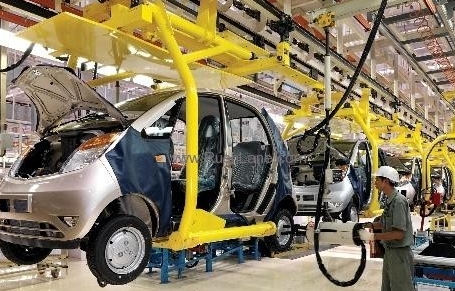
While it is easy to find rich, interesting analyses on the way finance companies, law offices and software labs’ inner processes are conducted, little is known about the insides of factories, industrial companies or R&D departments in the mechanical engineering sector. At MDF, we are eager to initiate the public and future mechanical engineers into our domain and give a clearer image of what goes on within our offices.
One of the most common questions we get is “how do we design machines?” The truth is that it is a very broad question. The theoretical pattern is of course common for all the industries (defining requirements, V-process, specs, documents, etc.) but every industry has some specific rules and processes to meet its unique specifications.
In this article, we will introduce you to the mechanical design process within the automotive industry.
Step 1: A need arises In mechanical design engineering, a need is defined as a requirement.
Why do we want to create a new vehicle? Why do we want to improve an existing vehicle?
These are the two questions that control the existence of a need. It can have many sources:
Marketing department discovered a new potential market. Sales department landed a big offer on a set of personalized set of vehicles. A deficiency showed up in a set of manufactured products. New advances in technology will allow a performance improvement. Competition will be launching a new vehicle.
Once the mechanical design department receives a need, it is formulated as a technical requirement that will define the desired outcome and the main features to create or modify.
Step 2: A POC is created The mechanical design department produces a POC (proof of concept). This is a light mockup that demonstrates the feasibility of the requirement and gives a first visual idea of the requested product. Many POCs are made in clay or on 3D modeling software. They normally don’t take much time to make. The final adopted POC is chosen by a board that includes different departments: Mechanical Design and its inner groups (Analysis, R&D, simulation, CAD, etc.), Sales, Marketing, and more.
Step 3: A spec is developed An initial spec document is created containing all the product requirements, features, and constraints of the various technological solutions.
Step 4: CAD modeling 2D and 3D modeling are conducted according to the spec document. These models and drawings are continuously improved through feedback and review after each step. Ultimately, the result is a set of several complete CAD models.
Step 5: Animation and user feedback The CAD models that make it through the board selection get animated to give a more realistic view of the vehicle in motion within an environment. This will launch the analysis study of the retained 3D models. At this point, all the models are:
3D. Fully detailed with initial geometric dimensions and surfaces.
Step 6: Analysis Once the 3D models are approved for analysis, the mechanical design engineers proceed to the creation of the FE (finite element) models of the design. These will be the main data on which many case studies will be conducted to get an initial insight about how the parts of the car will behave, if they will be able to withstand working and environmental conditions, and if there will be noise or failure. The major case studies conducted on cars:
Crash Impact Strength of Structure Noise and Vibration Ergonomics
For some mechanical systems (ones dealing with fluid transmission for example), more specific case studies might be needed.
Analysis is an iterative process and often leads to iterative modifications of the CAD models.
The final outcome should meet the requirements of strain, stress, lifecycle, frequencies and several other parameters according to the spec documents. Once analysis is over, the first prototype can be manufactured.
Step 7: Testing
Testing involves the main parts of the cart first, then the assembled prototypes. Thanks to automated 5-axis machines and the other manufacturing advances, we can quickly manufacture most parts by introducing the CAD file along with the manufacturing specifications. Some parts can be easily tested such as door latches, small electrical engines, brakes, etc. while others (such as the fuel system) will require more money and time.
The testing will either lead to an approval or a request to review the CAD and analysis of the part. Once all the parts are approved, the prototypes are assembled. These prototypes don’t have aesthetic features, and are notintended to be a full rendition of the final product. They cover the insides of the car and its support. Testing involves the case studies treated in the analysis step but with a manikin. By recovering the output data resulting from crash, ergonomics, noise and vibration tests, the engineers are able to have a practical error analysis and a technical understanding of the virtual models, the lifecycle of the cars and the compromises that can are available.
The final outcome is a model that meets the main requirements while displaying the performance results and the error range expected at a certain confidence level.
The Final Decision
Developing a car model can take from 1 to 5 years or more. That is why many companies launch the concept study of several models at a time, so that they can keep pace with development in the coming years. The final decision may therefore show up long after starting. The design department presents the studied models, the performances, the available features to be added or subtracted, and the error ranges observed. The board of this meeting is usually made of the top executives, who finally decide if the car could be launched for production.





 Customer service 1
Customer service 1  Customer service 2
Customer service 2